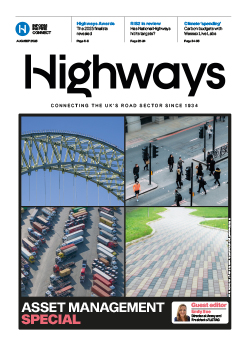The bridge, which crosses the River Thames in West London, was opened in July 1933 and carries around 40,000 vehicles, as well as hundreds of cyclists and pedestrians each day. Survey work found that some sections of the bridge parapet and internal structures have significantly deteriorated. While it remains safe to use, some aspects need to be replaced to ensure that the structure can last for many more years to come. Work on this major restoration project will begin after the Oxford and Cambridge Boat Race on 6 April, ensuring that the thousands of spectators who come to watch the race can do so easily this year.
TfL has been working with key partners to develop a programme that will repair the structure of the 80 year old bridge and restore its heritage features. Parapets along the edge of the bridge will be strengthened and the steps to and from the riverside repaired. A segregated cycle lane will also be installed on the footpath to improve facilities for cyclists. Concrete repairs will be made inside the structure to strengthen and restore the bridge and the existing footways and carriageways waterproofed and resurfaced to improve the overall look.

Lighting across the bridge will also be upgraded with new energy efficient heritage lighting, which will replicate the design of the lighting on the bridge when it first opened. Lighting on the stairs from the bridge to the riverside will also be upgraded with lighting on the southern side installed for the first time in the bridge’s history.
Garrett Emmerson, chief operating officer for surface transport at TfL, said: “These works will restore the bridge to its original splendour and ensure that it can remain a key landmark for years to come. We’re working hard to deliver these improvements while keeping the bridge open, helping to ensure they cause the minimum disruption to road users, local residents and businesses.”
The restoration of Chiswick Bridge forms part of TfL’s ongoing major investment into London’s roads. The Mayor and TfL are doubling its investment in the network from £2 to £4 billion across the next 10 years, helping to deliver the recommendations of the Mayor's Roads Task Force (RTF) to tackle the challenges facing London's streets and roads.





